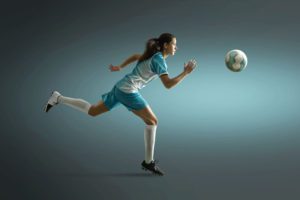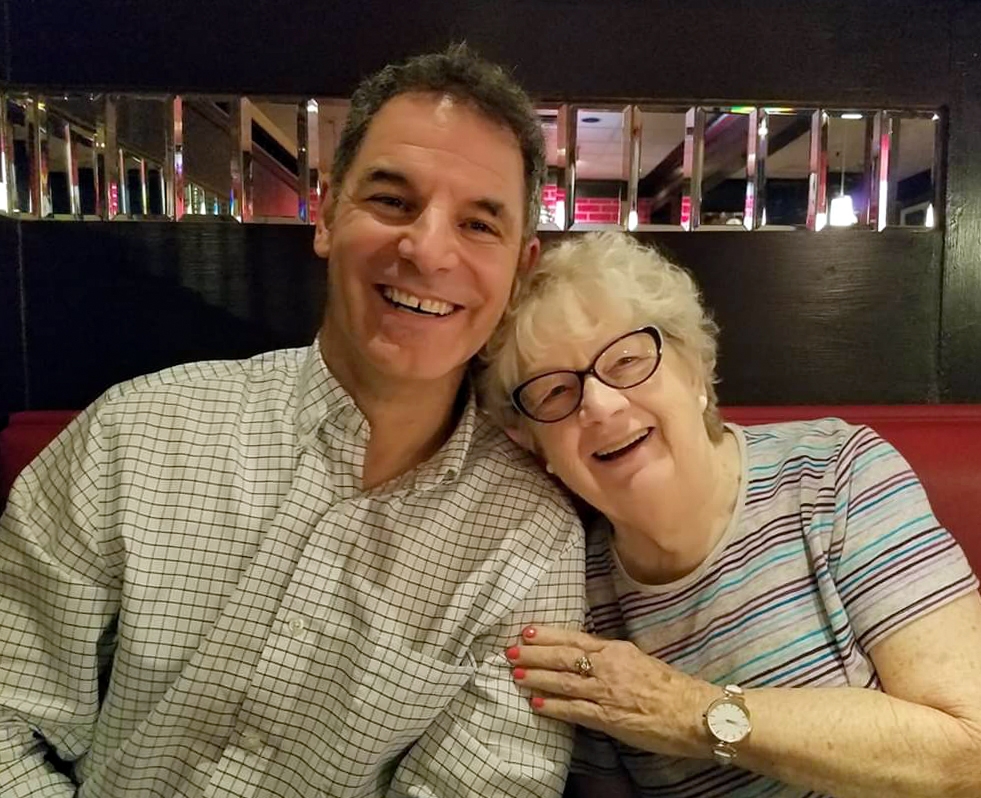Female Soccer Players Take the Field in BIAAZ Advisory Council Member’s Concussion Improvement Assessment
It was a beautiful spring day, perfect for a bike ride for 10-year-old John, his mother and sister. As they came to a hill, something went wrong. Without warning, John’s mother fell, slammed her head on the hard ground, and blacked out.
After what seemed like forever, a neighbor saw what had happened and called an ambulance. John recalls, “I remember vividly blood pouring out of her head. I had no control and was unable to do anything.” It was this feeling of helplessness that inspired him to never be in this position again.
He would go on to become an Air Force medic for 12 years and earn a Master’s, Clinical doctorate and then a PhD from Rocky Mountain University. His dissertation on concussion assessment has been the cornerstone of his career. And with three professional certifications under his belt (orthopedics, neurology and sports), this Associate Professor at Northern Arizona University is more dedicated than ever.
“It’s all about the patient,” states Brain Injury Alliance of Arizona (BIAAZ) Advisory Council Member Dr. John Duane Heick. “Getting them better, getting them the resources they need, no matter where they are on the spectrum of care.”

Now he’s focusing his attention on an overlooked source of brain injury – female soccer players. While football often gets the headlines for being the sport with the greatest number of brain injuries, women’s soccer comes in at number two. Dr. Heick has been following this trend for years and has recently received two NAU grants to help lessen the effects of brain injuries.
The first grant is to improve concussion assessment, and recent studies should concern anybody who thinks the biggest risk a young soccer player faces is exhaustion or a knee injury.
Because females’ necks are structurally not as strong as males, they are more susceptible to brain injury when doing headers, shots that are made solely with their heads, colliding with another player, or falling to the ground. The ball’s impact isn’t always obvious, but Dr. Heick points out the effects are cumulative. “Recently, authors reported that women who played 30 years ago are now showing brain injury as a result of too many headers or impacts with other players. In autopsies of former players, there’s a build-up of tau, indicating brain injury. The problem was they didn’t think of concussions as a potential long-term problem.”
To combat this oversight, he is developing a better method of concussion assessment. Before this soccer season began, each NAU player underwent Vestibular/Ocular Motor Screening (VOMS) to establish a baseline for any existing conditions. Since MRI’s can’t be used to detect concussions, the VOMS is an effective way to measure coordination between the eyes and head.
One test within the VOMS includes the shaking of one’s head back and forth (as if saying no) to a metronome while looking at a target to see if they experience symptoms such as dizziness, nausea, or visual instability.
Dr. Heick adds, “Another key is the patient’s balance. In many cases, having trouble maintaining physical balance is an indication that something is wrong.”
As part of the study, players are assessed throughout the season, with results being compared to the baseline findings.
Dr. Heick also points out that the old method of treating brain injury by lying down in a dark room is the wrong approach. “We have learned that the brain needs to be stimulated in a graded fashion but earlier than we previously thought. That’s why early detection is so crucial.”
In addition to assessment, he has an NAU grant to study treatment by coordinating efforts of different disciplines – psychology, physical therapy and athletic training. Using an EEG, he has been analyzing the brain waves of students and faculty who have been diagnosed with a concussion within the past 48-72 hours.
Neurofeedback calms down brain activity; as the patient achieves a relaxed state, brain activity dampens down as well. He is quite optimistic. “So far, so good…we hope this trend persists and treatment proves effective throughout the year of this study.”
Dr. Heick is also publishing in two other journals. In 2020, his article on concussion assessment will be published. Using the convergence test of VOMS, he finds that size matters in the tools that are used for concussion assessment (the tip of a finger, a pen, etc.). With inappropriate targets to measure the effect of a potential concussion, athletes could be severely injured by an additional impact (Second Impact Syndrome), when they shouldn’t have returned to the playing field.
In November 2019, the Montana native also contributed to Umphred’s Neurological Rehabilitation 7th edition. His chapter, Differential Diagnosis of the Neurologic Patient, focuses on his area of teaching, differential diagnosis. He emphasizes the importance of health care professionals spending more time with patients than the current average of 10-11 minutes.
By comparison, physical therapists typically spend 45 minutes to one hour with a patient. Given more time, if possible, health care professionals would then be able to make the best referrals and appropriate resources for treatment.
Which ties in quite nicely to his work at BIAAZ: “The biggest thing we can do as an advisory board is give the big picture and the interdisciplinary approach – have you thought about this?
“Whether a person has been dealing with TBI for 30 years, or If they’ve just had it, it’s huge to be able to help them out, and this advisory group of professionals is an ideal thing to have for patients; you don’t normally see that.”
He’s also very happy about one other thing: His mother recovered soon after her fall and is now living very comfortably in Orlando.
Dr. Heick’s wife Beth is a physical therapist (more specifically, a clinical wound specialist) and clinical professor at NAU. Their son Matt, 17, plays rugby and has never had a concussion. Their 15-year-old daughter Elise is trying out for track and field this spring.
ABOUT BRAIN INJURY ALLIANCE OF ARIZONA
Brain Injury Alliance of Arizona (BIAAZ) is a social benefit organization dedicated to creating a better future through brain injury prevention, advocacy, awareness and education. What began in 1984 as a grassroots effort has grown into a strong statewide presence, providing valuable resources for individuals with brain injuries, caregivers and neuro professionals.
For more information on living well after brain injury, contact the Brain Injury Alliance of Arizona Statewide Neuro Info-Line 888- 500-9165.






